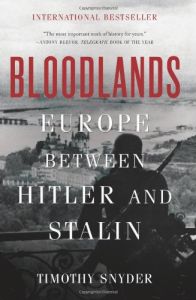
Bloodlands
Europe Between Hitler and Stalin
Read offline
Recommendation
So much has been written about the atrocities committed in Eastern Europe during the 1930s and 1940s – not to mention all the feature films and documentaries – that casual observers of history might think they already know this story. Then along comes Yale historian Timothy Snyder, who recasts the drama of the 14 million people starved, shot and gassed during a 12-year period. Snyder precisely documents how Stalin and Hitler utilized the “bloodlands” – the borderlands between their nations – to execute their genocidal plans. Snyder’s great contribution is to “turn the numbers back into people.” getAbstract thinks his meticulous history should be required reading, particularly for new generations who may not understand the full horror or impact of Europe’s greatest murder mystery. And what is that mystery? It is not who committed the crimes or why; that is mostly known from this source and many others. Rather it is how each victim faced death, often in the most cruel circumstances, and how the killers, millions of people, and their witnesses, millions more, lived with these crimes, and even justified them.
Take-Aways
About the Author
Yale University history professor Timothy Snyder specializes in the Holocaust and Central and Eastern Europe.
















Comment on this summary or Iniciar a Discussão